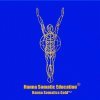QuestionOn May 4, 2009 I fell on my lower back since then I have had pain radiating down right leg with tingling/numbness to my toes. Also have pain down left leg with tingling down to right root. I also have pain radiating down my neck right side with tingling and numbness down into my fingers. Also have some down my left neck/ arm to my wrist. Starting to have burning in my shoulder blades. Have had x-rays and MRI's done of lumbar, cervical, and thorasic spine. Cervical MRI revealed degenerative disc disease, cervical spondylosis, disc herniation and numerous osteophytes. X-ray revealed facet arthropathy at multiple levels with mild neural faraminal compromise at C5-6, C6-7, & C7-T1. MRI of thorasic spine revealed 1 6 mm left paracentral disc protrusion at T12-S1, no disc herniation, no subluxation or loss of vertebral body height. X-ray of thorasic spine revealed mild osteoarthritis at several levels. MRI of lumbar revealed hypertrophic degenerative facet disease at L5-S1. Facet osteophytes were present causing mild foraminal encroachment. A broad based left paracentral disc protrusion at L2-3. A 2 mm x 3 mm synovial cyst in the left lateral reces at L5-S1 resulting in nerve root displacement with possible mild compression. Advanced pypertrophic degenerative facet disease is greater on the right of L5-L1. L4-L5: Disc desiccation is associated with minimal disc bulging. Degenerative facet disease is mild on the left. This is mild left foraminal encroachment due to the disc bulge with a small annular tear but no disc extrusion. L3-L4: Mild disc bulging posterolaterally to the left minimally encroaching on the inferior aspects of the neural exit canal. L2-L3: Broad based left paracentral disc protrusion into the left lateral recess with flattening of the anterior thecal sac. No lumbar canal or significant foraminal stenosis. L1-L2: L2 compression fracture appears stable. Mild disc desiccation and disc bulgingis present at this level. No significant canal or foraminal encroachment. T12_L1: Left paracentral disc protrusion into the left lateral recess without cord or nerve root compression. X-ray of lumbar spine revealed moderate facet arthritic changes in the lower spine. There was superior end plate compression of the L2 with a kyphoplasty. These MRI's and X-rays were taken between May and September 2009. I fell on May 4, 2009 on my lower back hitting my left elbow and left wrist.
There is a transitional S1 vertebra with a prominent S1-S2 disc. Conus medullaris ends at L2. Paraspinal muscles are mildly atrophic. Abdominal aorta of normal caliber. If you could explain this in plain English I would greatly appreciate it. I am currently undergoing physical therapy for the last 6 weeks with 4 - 6 weeks left of physical therapy. A nerve conduction test will be preformed on Oct. 19, 2010. Do you have any suggestions for treatment. The chronic pain is terribly depressing. Thank you Any suggestions for treatment etc. will be appreciated.
Answer
 Hanna somatic educatio
Hanna somatic educatio
Hello, Kathy.
It all reduces down to this simplicity: you have tight muscles along the length of your spine that cause compression of the discs, resulting in bulges, nerve entrapment (tingling and radiating pain), degeneration of the discs from long-term compression, and growth of bone spurs (osteophytes) in the direction of pull of your tight muscles. You were tight for a long time before the fall, which triggered you to a higher state of tension and the appearance of symptoms.
For relief and healing to occur (for physical therapy to be successful), you need to recapture control of those tight muscles and learn to relax them for free and balanced movement.
May I direct you to my write-ups on back pain and back pain terms:
http://somatics.com/back_pain.htm
http://somatics.com/back_pain_terms.htm
If you were my client, I would anticipate about eight sessions needed, once weekly.
If you would like a recommendation for a muscle training program (self-help), please ask.
regard,
Lawrence Gold


